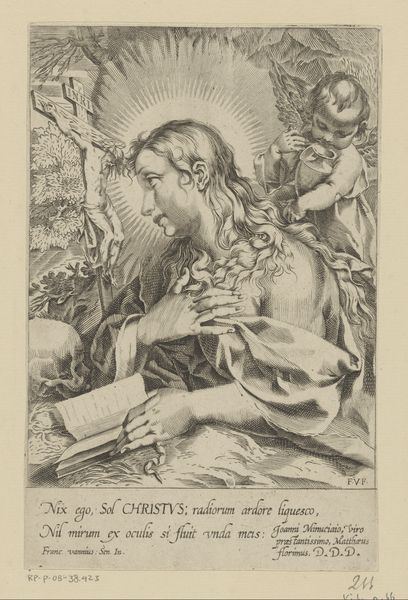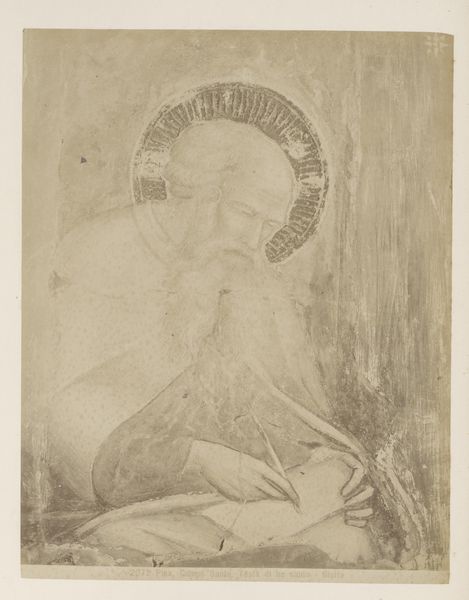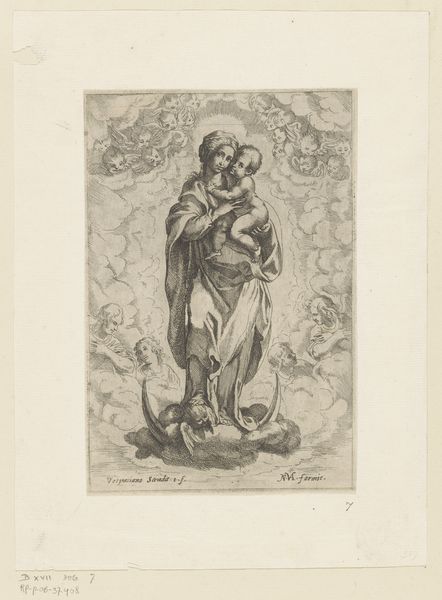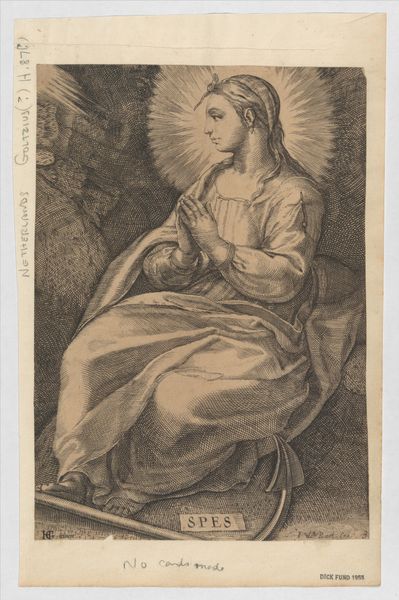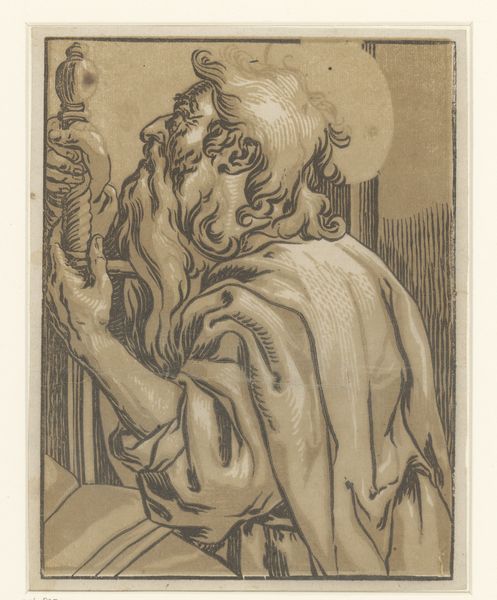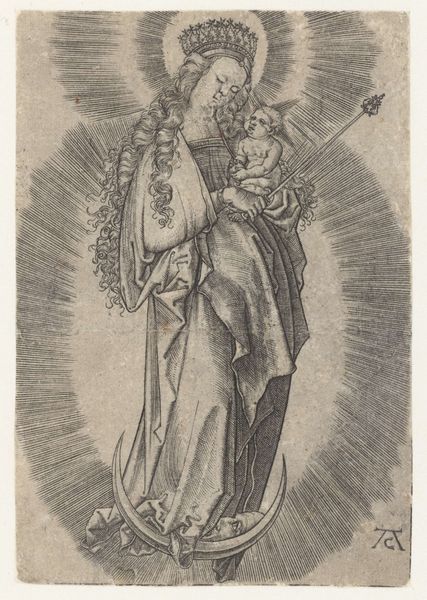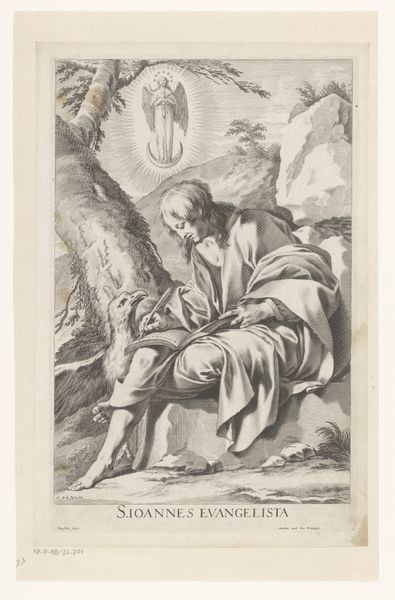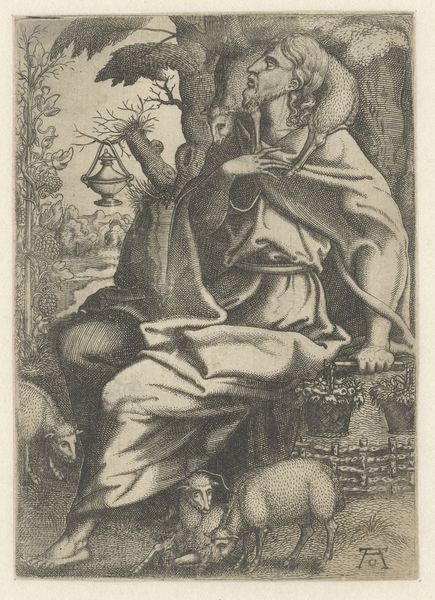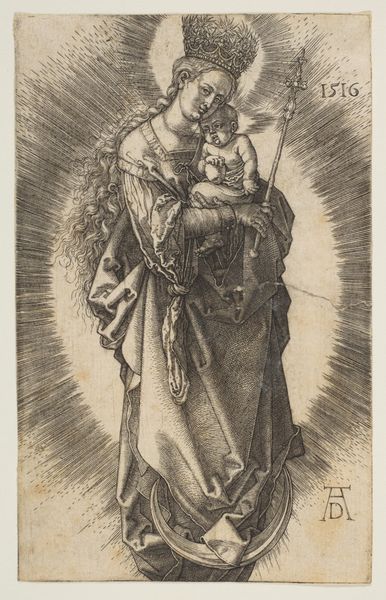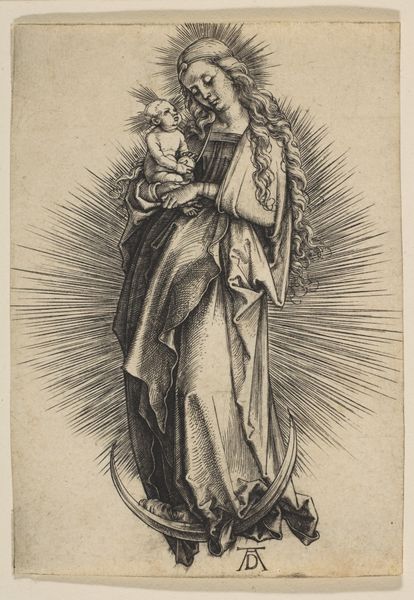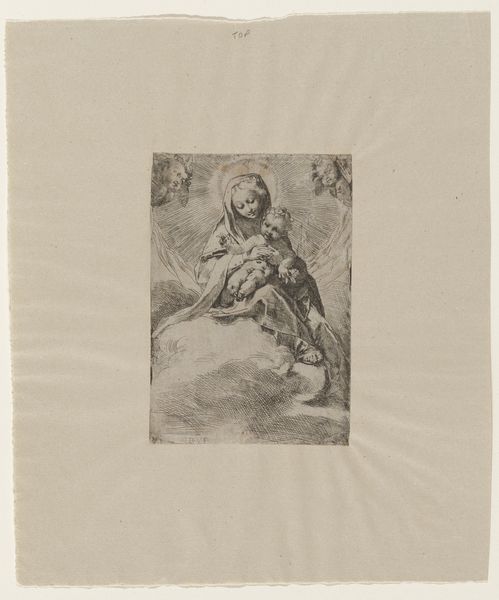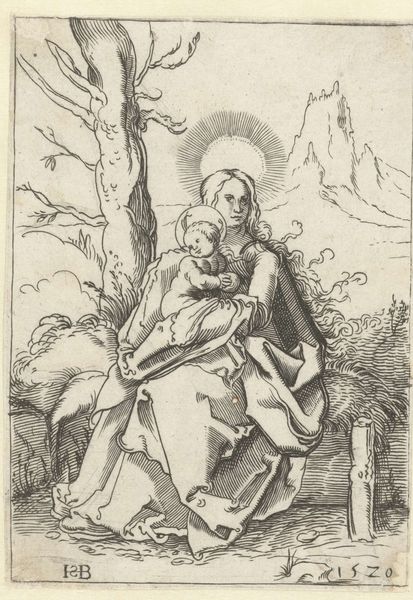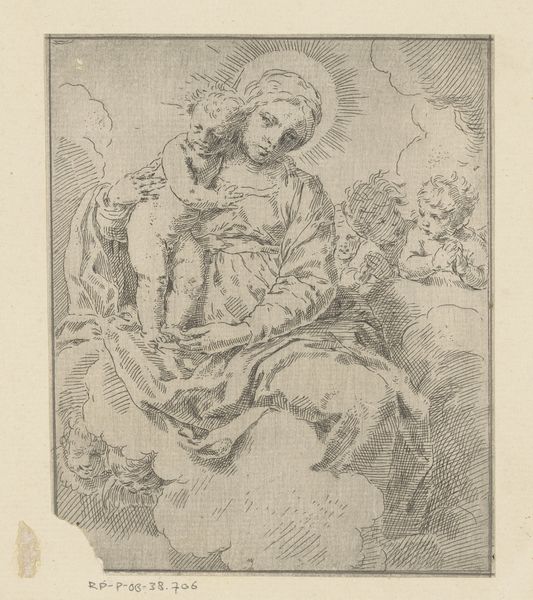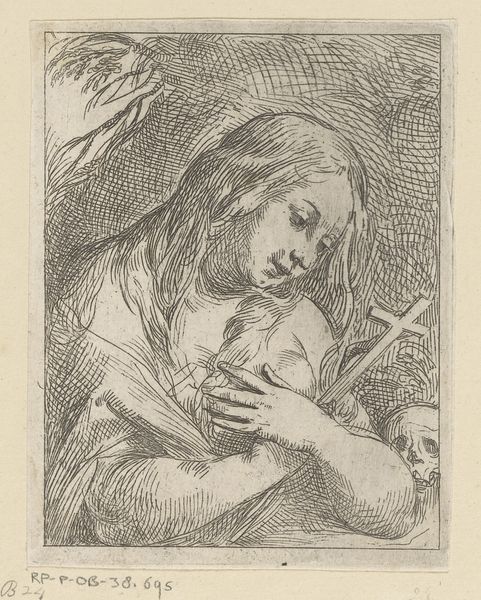
print, engraving
#
portrait
#
facial expression drawing
#
baroque
# print
#
figuration
#
limited contrast and shading
#
portrait drawing
#
history-painting
#
engraving
Dimensions: height 186 mm, width 145 mm
Copyright: Rijks Museum: Open Domain
Editor: Here we have Francesco Villamena’s “Penitent Mary Magdalene,” a print made sometime between 1576 and 1624. The use of light and shadow is pretty striking. What's your take on this piece? Curator: Well, it's interesting to consider how images of Mary Magdalene, particularly in the Baroque period, served as powerful tools of the Counter-Reformation. Notice the inclusion of the skull, the crucifix, the angel, elements designed to elicit contemplation of mortality, redemption, and divine intervention. Do you think these were standard iconography? Editor: I suppose so, it really pushes that narrative of repentance and seeking forgiveness. It feels…constructed, I guess? Almost propagandistic. Curator: Exactly. Prints like this circulated widely, shaping popular piety and reinforcing the Church's message about sin and redemption. Think about who the audience was, how this image might function in a private devotional setting versus a public one. The scale of distribution definitely has meaning. Editor: So the artwork isn't just depicting a religious scene, it's actively *doing* something, influencing viewers in a specific socio-political context? Curator: Precisely! And it's not just about the overt religious message. Consider the idealized beauty of Mary Magdalene. The artistic choices - the play of light, the graceful pose - contribute to a certain aestheticization of penitence, almost like a performance of grief, accessible for everyone to view. How might that complicate our understanding? Editor: Wow, I hadn’t considered the performative aspect. It's a good point about how her beauty actually shapes our understanding of penitence, or perhaps softens it. I’ll never look at these Baroque paintings in the same way. Curator: That’s the joy of art history – peeling back the layers and seeing the interplay of art, power, and belief.
Comments
No comments
Be the first to comment and join the conversation on the ultimate creative platform.
